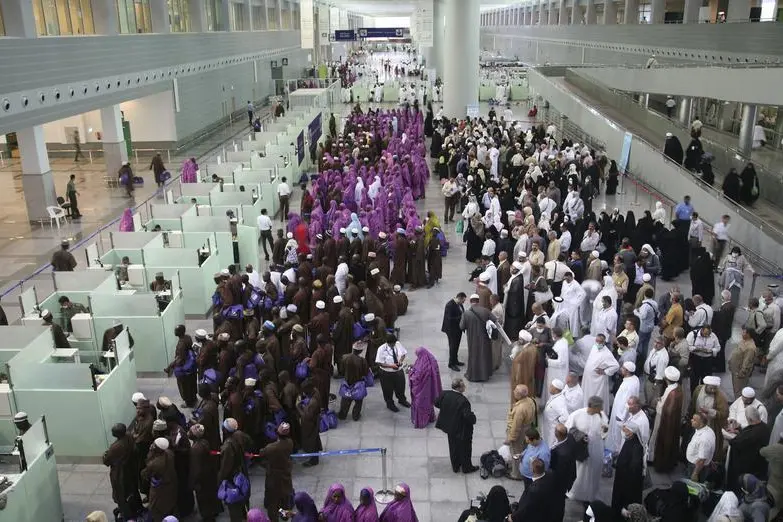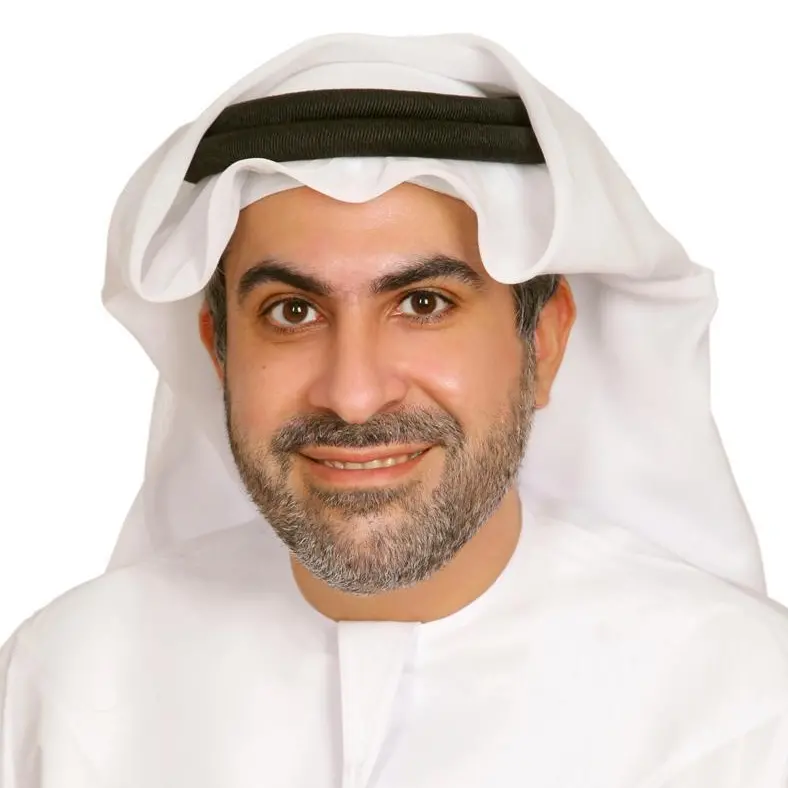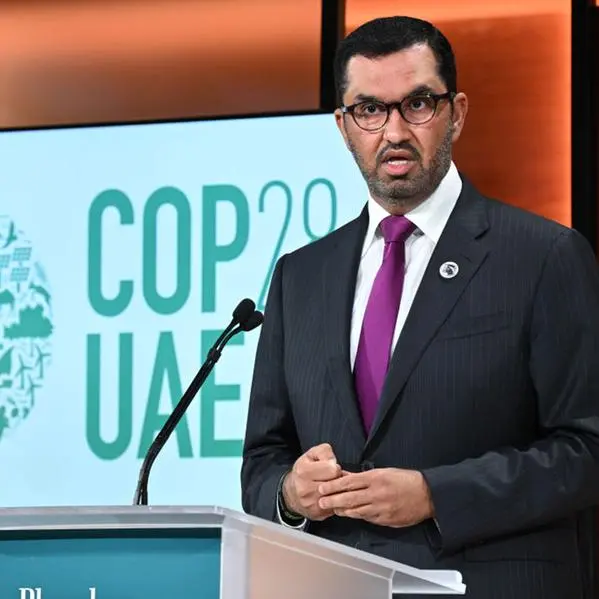PHOTO
LONDON - A massive, multibillion-dollar expansion project at King Abdul Aziz International Airport in Jeddah is critical to opening up the Kingdom to millions more visitors over the next 10 to 20 years, a senior official of Saudi Arabian Airlines (Saudia), the national flag carrier, told Arab News on the sidelines of the World Travel Market in London.
“From Saudia’s point of view, this will be our international hub and a connector hub for international passenger flows in the future. It is part of the Vision 2030 program,” he said.
“We want to be the main carrier for the airport — but not the only one — so we can bring in passengers from all over the world.”
Hajj and Umrah passengers would be Saudia’s main focus, but it also wants to capture transit passengers from Asia, North America and Europe as Saudi Arabia’s tourist infrastructure develops significantly in the years ahead.
The official ruled out Saudia buying stakes in foreign airlines to help the airport attract more international carriers, which in turn could allow target airlines to win landing slots. King Abdul Aziz International currently caters for 30 million passengers a year — the majority involved in Hajj and Umrah.
Instead, Saudia could “utilize” its existing relationship with the SkyTeam global airline alliance of which it is a member, and includes KLM, Air France, China Airlines, Aeroflot, China Southern and Delta.
Although the main focus will be on visitors coming to Saudi Arabia on Umrah visas, the expanded airport and infrastructure will see the airport transformed into an interconnector hub for travelers from around the world.
International passengers could break their journeys in Jeddah in much the same way as transit passengers spend a few days in Dubai before continuing to other destinations, suggested the official.
But while transit passengers traveling on Dubai flag carrier, Emirates, made up about 60 percent of the total, Saudia would settle for less — around 30 percent, said the official.
For the expansion plans to work smoothly, a revamped visa system would be needed to make traveling to the Kingdom easier. The official is confident visa changes would be signed off by the authorities soon.
The Kingdom is already developing new resorts and centers on the Red Sea, undertaking a significant expansion of hotels and apartments in Jeddah and elsewhere; it has also earmarked enhancements to national rail and road networks, as well as improving links between airports within the country.
The most ambitious project for the country was announced on Oct. 24 2017, by Crown Prince Mohammed bin Salman when he unveiled plans to build a $500 billion mega city on the Red Sea coast, as part of a huge national push to diversify its economy.
The 26,500 square kilometers zone, known as Neom, will focus on industries including energy and water, biotechnology, food, advanced manufacturing and entertainment.
“The focus on these sectors will stimulate economic growth and diversification by nurturing international innovation and manufacturing, to drive local industry, job creation, and GDP growth in the Kingdom,” said the crown prince, who is also the chairman of the Public Investment Fund (PIF).
The new airport in Jeddah is spread across 105 square kilometers and features a 136m air traffic control tower, 3,000-person capacity mosque, 220 service counters 80 self-service counters and parking for 8,200 vehicles.
The expansion work also includes a SR350 million ($93.3 million) Saudia facility designed to increase the airline’s number of flights from 500 to 1,000 a day.
The move is expected to reduce crowding, particularly during the holiday season.
King Abdul Aziz International Airport received 31 million passengers in 2016, a 3 percent increase on 2015.
15.9 million in the south terminal, 6.7 million in the north terminal and 8 million in the Hajj terminal.
The airport is expected to exceed the 31 million figure this year, nearly three times its 12 million capacity due to the growing number of Umrah pilgrims.
Phase one of the expansion will be completed in June to cope with a capacity of between 30 million and 35 million. The second phase — due for completion in three or four years — will boost that number to 65 million, and the third phase will take capacity to 90 million.
Saudia is increasing its fleet from 140 planes to 200 by 2020, with new 787s and A320s under order, said the official.
“From Saudia’s point of view, this will be our international hub and a connector hub for international passenger flows in the future. It is part of the Vision 2030 program,” he said.
“We want to be the main carrier for the airport — but not the only one — so we can bring in passengers from all over the world.”
Hajj and Umrah passengers would be Saudia’s main focus, but it also wants to capture transit passengers from Asia, North America and Europe as Saudi Arabia’s tourist infrastructure develops significantly in the years ahead.
The official ruled out Saudia buying stakes in foreign airlines to help the airport attract more international carriers, which in turn could allow target airlines to win landing slots. King Abdul Aziz International currently caters for 30 million passengers a year — the majority involved in Hajj and Umrah.
Instead, Saudia could “utilize” its existing relationship with the SkyTeam global airline alliance of which it is a member, and includes KLM, Air France, China Airlines, Aeroflot, China Southern and Delta.
Although the main focus will be on visitors coming to Saudi Arabia on Umrah visas, the expanded airport and infrastructure will see the airport transformed into an interconnector hub for travelers from around the world.
International passengers could break their journeys in Jeddah in much the same way as transit passengers spend a few days in Dubai before continuing to other destinations, suggested the official.
But while transit passengers traveling on Dubai flag carrier, Emirates, made up about 60 percent of the total, Saudia would settle for less — around 30 percent, said the official.
For the expansion plans to work smoothly, a revamped visa system would be needed to make traveling to the Kingdom easier. The official is confident visa changes would be signed off by the authorities soon.
The Kingdom is already developing new resorts and centers on the Red Sea, undertaking a significant expansion of hotels and apartments in Jeddah and elsewhere; it has also earmarked enhancements to national rail and road networks, as well as improving links between airports within the country.
The most ambitious project for the country was announced on Oct. 24 2017, by Crown Prince Mohammed bin Salman when he unveiled plans to build a $500 billion mega city on the Red Sea coast, as part of a huge national push to diversify its economy.
The 26,500 square kilometers zone, known as Neom, will focus on industries including energy and water, biotechnology, food, advanced manufacturing and entertainment.
“The focus on these sectors will stimulate economic growth and diversification by nurturing international innovation and manufacturing, to drive local industry, job creation, and GDP growth in the Kingdom,” said the crown prince, who is also the chairman of the Public Investment Fund (PIF).
The new airport in Jeddah is spread across 105 square kilometers and features a 136m air traffic control tower, 3,000-person capacity mosque, 220 service counters 80 self-service counters and parking for 8,200 vehicles.
The expansion work also includes a SR350 million ($93.3 million) Saudia facility designed to increase the airline’s number of flights from 500 to 1,000 a day.
The move is expected to reduce crowding, particularly during the holiday season.
King Abdul Aziz International Airport received 31 million passengers in 2016, a 3 percent increase on 2015.
15.9 million in the south terminal, 6.7 million in the north terminal and 8 million in the Hajj terminal.
The airport is expected to exceed the 31 million figure this year, nearly three times its 12 million capacity due to the growing number of Umrah pilgrims.
Phase one of the expansion will be completed in June to cope with a capacity of between 30 million and 35 million. The second phase — due for completion in three or four years — will boost that number to 65 million, and the third phase will take capacity to 90 million.
Saudia is increasing its fleet from 140 planes to 200 by 2020, with new 787s and A320s under order, said the official.
Copyright: Arab News 2017 All rights reserved. Provided by SyndiGate Media Inc. (Syndigate.info).












